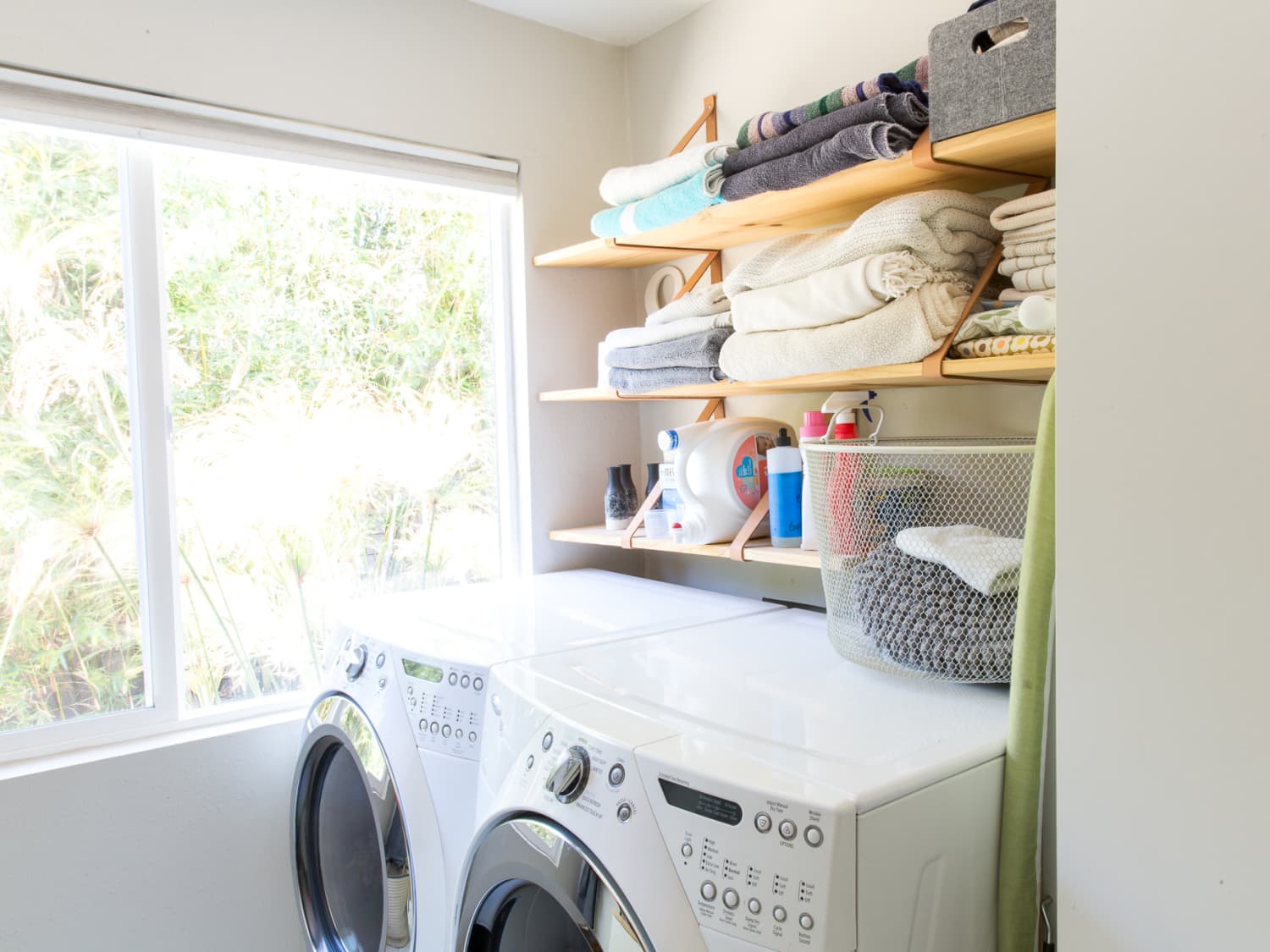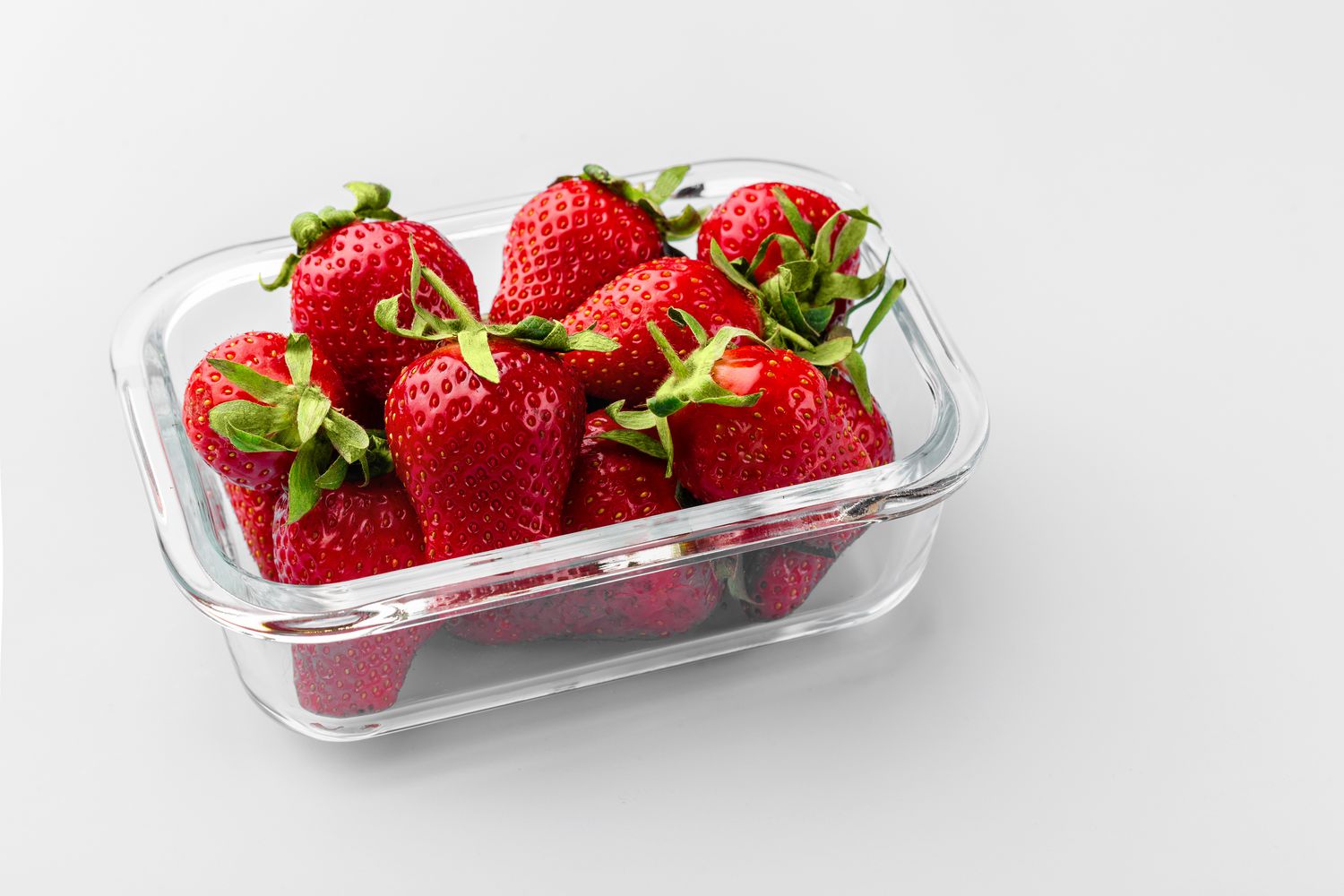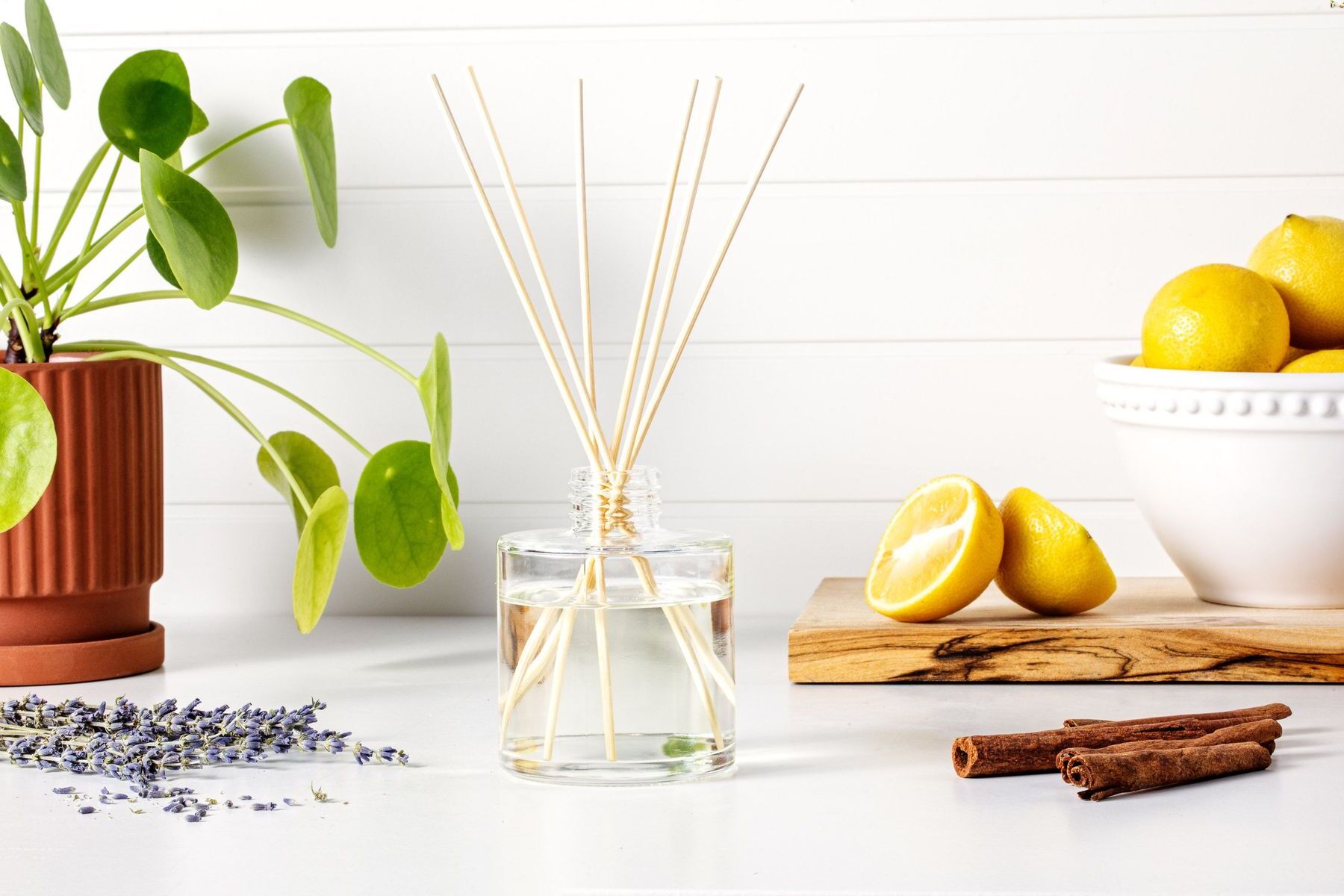Home>Garden Essentials>Garden Storage>How To Keep Clothes In Wardrobe Fresh


Garden Storage
How To Keep Clothes In Wardrobe Fresh
Modified: October 20, 2024
Discover effective storage techniques to keep your clothes fresh and organized in your wardrobe. Utilize smart storage solutions for a clutter-free and aromatic closet.
(Many of the links in this article redirect to a specific reviewed product. Your purchase of these products through affiliate links helps to generate commission for Storables.com, at no extra cost. Learn more)
Introduction
Welcome to our comprehensive guide on how to keep your clothes fresh and well-maintained in your wardrobe! We all know that our wardrobe is a treasure trove of fashion, housing our favorite outfits, cherished garments, and valuable accessories. However, if not properly stored, our clothes can lose their freshness, suffer from damage, and become prey to pests and odors.
In this article, we will take you through some essential techniques and tips to ensure that your clothes remain in pristine condition, ready to be worn whenever you desire. From proper storage techniques to dealing with moisture, preventing odors, controlling insects and pests, and avoiding sun damage, we have got you covered.
Proper storage techniques are key to preserving the quality of your clothes. When it comes to hanging items in your wardrobe, use sturdy hangers to prevent stretching or misshaping. Hang your clothes in a way that allows for sufficient airflow and prevents crowding, as this can lead to wrinkles and creases. For delicate or special items that need extra care, consider using padded hangers or velvet hangers to avoid any potential damage.
When folding clothes, take the time to neatly fold them and stack them in an organized manner. Use dividers or storage cubes to keep different types of garments separated and easily accessible. This will not only help maximize space but also maintain the integrity of the fabric.
Garmet bags are a fantastic investment for protecting your clothes from dust, insects, and potential snags or tears. Zip up your special occasion dresses, suits, or delicate fabrics in garment bags before placing them in the wardrobe. This extra layer of defense will ensure that they remain in pristine condition until you are ready to wear them.
Key Takeaways:
- Proper storage techniques such as using sturdy hangers, neatly folding clothes, and utilizing garment bags are essential for maintaining the freshness and quality of your wardrobe, ensuring your clothes remain in pristine condition.
- Combatting moisture, preventing odors, controlling insects, and avoiding sun damage are crucial for preserving the integrity of your clothes in the wardrobe, ensuring they remain fresh, clean, and free from damage.
Read more: How To Keep Thyme Fresh In The Fridge
Proper Storage Techniques
When it comes to maintaining the freshness and longevity of your clothes in the wardrobe, proper storage techniques play a crucial role. Let’s delve into three essential methods: hanging, folding, and using garment bags.
Hanging
Hanging your clothes in the wardrobe is ideal for items like dresses, blouses, shirts, and jackets. However, it’s important to keep a few things in mind to ensure the best care for your garments.
First, invest in sturdy hangers that can support the weight of your clothes without stretching or damaging them. Wooden or padded hangers are excellent options for maintaining the shape of your clothing. Avoid using wire hangers, as they can leave creases and distort the shape of your clothes.
Next, allow adequate space between garments to prevent overcrowding. This prevents wrinkles and allows air to circulate freely, reducing the chances of musty odors or mold. Blouses and shirts should be hung with the top buttons fastened to help them keep their shape.
Lastly, for delicate items like silk or beaded garments, consider using padded hangers or layering them with tissue paper. This protects them from snags or damage that could occur from the hanger itself.
Folding
Folding clothes is a practical storage solution that maximizes space and minimizes wrinkles. By properly folding your garments, you can maintain their condition and make them easily accessible.
Start by folding items neatly and uniformly. Smooth out any wrinkles or creases before folding to ensure a clean, polished look. Take special care with delicate fabrics, such as silk or cashmere, by using tissue paper or fabric protectors between layers to prevent friction and maintain the integrity of the fibers.
Use dividers or storage cubes to keep different types of garments separated and organized. This makes it easier to find specific items and eliminates the need to rummage through a messy stack of clothes. Keep heavier items, like denim or sweaters, on the bottom to prevent crushing lighter and more delicate fabrics.
Using Garment Bags
Garment bags are a valuable investment for protecting your clothes from dust, insects, and potential snags or tears. They are especially useful for storing delicate fabrics, special occasion dresses, or valuable vintage pieces.
When using garment bags, choose ones that are made of breathable material like cotton or canvas to allow for proper air circulation. Avoid plastic bags or ones made of non-breathable materials, as they can trap moisture and lead to mildew or musty odors.
Before placing your garments in the bags, make sure they are clean and dry to prevent the growth of mold or mildew. Hang the garment bags to avoid any creasing or wrinkling of the clothes inside. Furthermore, properly label your garment bags to easily identify specific items, especially if you have a large wardrobe or frequently rotate your clothes.
By utilizing these proper storage techniques – hanging, folding, and using garment bags – you can maintain the freshness and quality of your clothes in the wardrobe. When it’s time to dress up, you can be confident that your garments will be ready to wear, looking fantastic and free from any damage.
Read more: How To Keep Closet Smelling Fresh
Dealing with Moisture
Moisture can wreak havoc on your clothes, causing them to become musty, moldy, and even damaged. To keep your wardrobe fresh and free from any moisture-related issues, follow these tips: using dehumidifiers, avoiding damp areas, and utilizing moisture-absorbing materials.
Using Dehumidifiers
A dehumidifier is a useful tool for regulating the moisture levels in your home and preventing excess humidity in your wardrobe. Excess moisture can lead to mold growth, musty odors, and even deterioration of fabrics.
Place a dehumidifier in your home, preferably near or in the room where your wardrobe is located. Set the humidity level to an optimal range, usually between 40% and 50%, to prevent the growth of mold and mildew. Regularly empty and clean the water collection tray in the dehumidifier to maintain its efficiency.
Remember to regularly check the humidity levels in your wardrobe with a hygrometer. If the levels consistently exceed the recommended range, consider using a larger or additional dehumidifier to maintain proper moisture control.
Avoiding Damp Areas
It’s essential to position your wardrobe away from areas that are prone to moisture, such as bathrooms, laundry rooms, and basements. These areas tend to have higher humidity levels, which can transfer to your clothes and promote mold growth.
If relocating your wardrobe is not possible, ensure that the area is well-ventilated. This can be achieved by opening windows or using fans to circulate air. Good airflow reduces humidity and prevents moisture buildup, decreasing the chances of mold and mildew growth.
Utilizing Moisture-Absorbing Materials
Moisture-absorbing materials are excellent allies in the battle against excess humidity in your wardrobe. These materials help absorb moisture, keeping your clothes dry and fresh.
Silica gel packs are commonly used to absorb moisture. Place them in your wardrobe or within storage containers to prevent dampness. Remember to check and replace the gel packs regularly to maintain their effectiveness.
Another natural option is activated charcoal, which acts as a powerful moisture absorber and deodorizer. Place charcoal bags or sachets in your wardrobe to keep the air fresh and dry. Just like silica gel packs, make sure to replace the charcoal periodically to ensure optimal performance.
You can also use moisture-absorbing products like calcium chloride crystals or moisture absorber tubs. These products work by drawing in moisture and trapping it in a container. Position them strategically in your wardrobe to eliminate excess humidity.
By using dehumidifiers, avoiding damp areas, and utilizing moisture-absorbing materials, you can effectively combat moisture issues in your wardrobe. Your clothes will remain dry, fresh, and free from any musty odors or potential damage caused by excessive humidity.
Read more: How To Store Lettuce To Keep It Fresh
Preventing Odor
Unpleasant odors can quickly ruin the freshness of your clothes, making them unwearable. To keep your wardrobe smelling clean and fresh, follow these tips: regularly washing clothes, adding fragrance sachets or dryer sheets, and ventilating the wardrobe.
Regularly Washing Clothes
One of the most effective ways to prevent odor in your wardrobe is by regularly washing your clothes. Perspiration, body oils, and environmental pollutants can accumulate on garments and contribute to unwanted smells.
Follow the care instructions on the clothing labels and wash your clothes at the appropriate temperature and cycle. Using quality laundry detergent will effectively remove dirt, bacteria, and odor-causing substances. Don’t forget to separate your laundry by color and fabric type to prevent color bleeding or damage.
For particularly stubborn odors, consider using laundry additives specifically designed to combat odors. These additives can help eliminate lingering smells and leave your clothes smelling fresh and clean.
Adding Fragrance Sachets or Dryer Sheets
Adding fragrance sachets or dryer sheets to your wardrobe is an excellent way to infuse a pleasant scent into your clothes and combat any potential odors. These scented products release a gentle fragrance that keeps your clothes smelling delightful.
Place fragrance sachets or dryer sheets in drawers, on shelves, or hang them within garment bags to distribute the scent throughout your wardrobe. Opt for scents that you enjoy, such as lavender, jasmine, or fresh linen, to create a pleasant atmosphere every time you open your wardrobe.
Remember to replace fragrance sachets or dryer sheets periodically, as their effectiveness can diminish over time. This will ensure that your clothes continue to smell fresh and pleasant.
Ventilating the Wardrobe
A well-ventilated wardrobe is essential for preventing odors. Proper airflow helps to reduce moisture buildup and prevents musty or stagnant smells.
Keep the doors of your wardrobe open for a few minutes each day, allowing fresh air to circulate. If possible, place a fan or air purifier nearby to improve air circulation and reduce humidity levels.
Another option is to install a ventilation system in your wardrobe. This can be as simple as drilling small holes in the back of the wardrobe or using a dehumidifier with a built-in ventilation function. These measures help to expel stale air and promote the entry of fresh air, keeping your clothes smelling clean and fresh.
By regularly washing your clothes, adding fragrance sachets or dryer sheets, and ventilating your wardrobe, you can effectively prevent unpleasant odors from permeating your clothes. Enjoy stepping into your wardrobe and being greeted by the pleasant scent of freshly laundered garments!
Read more: How To Keep Celery Fresh In Refrigerator
Controlling Insects and Pests
No one wants to discover their precious garments have become meals for pests or infested with insects. To keep your clothes safe from these unwanted guests, follow these tips: cleaning the wardrobe regularly, using natural deterrents like lavender or cedar, and seeking professional help if infestation occurs.
Cleaning the Wardrobe Regularly
Regular cleaning is essential to prevent insects and pests from making your wardrobe their home. Start by emptying your wardrobe and thoroughly vacuuming the interior, paying extra attention to corners and crevices. This helps remove any food particles or eggs that pests may be attracted to.
Wipe down the shelves and surfaces with a mild cleaning solution, ensuring that it is safe for the materials of your wardrobe. This will eliminate any residues or scents that can attract pests. Don’t forget to clean the handles and hinges as well.
Before returning your clothes to the wardrobe, make sure they are clean and properly stored. Inspect each item for signs of pests, such as holes, droppings, or larvae. If you notice any signs of infestation, remove the affected garments and take necessary steps to address the issue.
Using Natural Deterrents like Lavender or Cedar
Natural deterrents can help keep insects and pests at bay while adding a pleasant fragrance to your wardrobe. Lavender and cedar are effective options that repel many common clothes moths and insects.
Place dried lavender sachets or lavender essential oil-infused cotton balls in your wardrobe. Alternatively, you can use cedar balls, cedar chips, or cedar sachets. These natural repellents release scents that pests find unappealing, discouraging them from making a home in your clothes.
Replace or refresh the lavender sachets or cedar items every few months to maintain their potency. This ensures that your clothes remain protected and free from any unwanted visitors.
Seeking Professional Help if Infestation Occurs
If you notice a severe infestation or suspect that your wardrobe is harboring pests, it’s best to seek professional help. Pest control professionals have the expertise and equipment to effectively eliminate pests and provide long-term solutions.
Call a reputable pest control company and describe the issue you are facing. They will conduct an inspection of your wardrobe and develop a customized treatment plan to eradicate the pests. Follow their recommendations for preparation and cooperate during the treatment process to ensure effective results.
Remember, prevention is key to avoiding pest infestations. Regular cleaning, use of natural deterrents, and prompt action when signs of infestation are spotted will help keep your wardrobe and clothes safe from insects and pests.
Read more: How To Store Sheets To Keep Them Fresh
Avoiding Sun Damage
Sunlight can cause severe damage to your clothes, including fading, discoloration, and weakening of the fabric. To protect your garments from sun damage, follow these tips: keeping your wardrobe away from direct sunlight, utilizing window coverings, and rotating clothes to prevent fading.
Keeping Wardrobe Away from Direct Sunlight
One of the most effective ways to protect your clothes from sun damage is to keep your wardrobe away from direct sunlight. Position your wardrobe in a part of the room that receives minimal exposure to direct sunlight throughout the day.
Sunlight contains ultraviolet (UV) rays, which can penetrate fabrics and cause colors to fade or change over time. By minimizing the amount of direct sunlight your clothes are exposed to, you can significantly reduce the risk of sun damage.
Utilizing Window Coverings
Another method to prevent sun damage is by utilizing window coverings. Window blinds, curtains, or shades can effectively block out sunlight and protect your clothes from harmful UV rays.
Keep your windows covered during the peak hours of sunlight, typically between 10 a.m. and 4 p.m. This is when the sun’s rays are the strongest and can cause the most damage. Consider investing in blackout curtains or UV-protective window films for added protection.
Remember to close the blinds or curtains when you are not in the room to ensure continuous protection for your clothes. This simple step can make a significant difference in preserving the vibrancy and quality of your garments.
Rotating Clothes to Prevent Fading
To avoid excessive wear and fading of your clothes, it is beneficial to rotate them in and out of your wardrobe. By doing so, you give each garment a break from constant exposure to light and minimize the risk of fading.
Regularly assess your wardrobe and divide your clothes into different collections or categories based on their seasonality or style. Keep out-of-season or less frequently worn items stored in a cool, dark place like a closet or storage bin until they are needed.
By rotating your clothes, you ensure that they receive equal exposure to light over time, preventing uneven fading. This practice also allows you to declutter your wardrobe and keep it organized, making it easier to locate and access the items you want to wear.
By keeping your wardrobe away from direct sunlight, utilizing window coverings, and rotating your clothes periodically, you can safeguard your garments from the damaging effects of the sun. Preserve the vibrant colors and longevity of your clothes, ensuring they remain in excellent condition for years to come.
Read more: How To Store Radishes To Keep Them Fresh
Key Tips for Wardrobe Maintenance
A well-maintained wardrobe ensures that your clothes remain in optimal condition and are readily accessible whenever you need them. Follow these key tips for wardrobe maintenance to keep your clothes fresh, organized, and in excellent shape: keeping clothes clean before storing, consistently organizing and decluttering, and checking for signs of wear and tear.
Keeping Clothes Clean Before Storing
One of the most crucial aspects of wardrobe maintenance is ensuring that your clothes are clean before storing them. Dirt, stains, and odors left on garments can attract pests, cause fabric discoloration, and even lead to permanent damage.
Before placing your clothes in the wardrobe, make sure they are freshly laundered or dry cleaned according to the garment’s care instructions. This step eliminates any potential sources of odor or stains, and prevents them from setting in over time.
Pay special attention to stains and spills, treating them promptly and appropriately. Addressing stains immediately can increase the effectiveness of stain removal and help preserve the overall appearance of your clothes.
Consistently Organizing and Decluttering
Regularly organizing and decluttering your wardrobe is essential for maintaining a functional and visually appealing space. Start by categorizing your garments based on style, type, or season. This makes it easier to find specific items and avoids unnecessary rummaging.
Consider implementing storage solutions like dividers, storage cubes, or specialized hangers to maximize space and keep everything in order. This will minimize the chances of clothes getting wrinkled, tangled, or damaged.
Periodically declutter your wardrobe by assessing each item’s condition and determining whether you still wear and love it. If a garment no longer serves you or is showing signs of wear, consider donating, selling, or repurposing it.
By keeping your wardrobe organized and free from unnecessary items, you create a streamlined and efficient space that allows you to fully appreciate your clothing collection.
Checking for Signs of Wear and Tear
Regularly inspect your clothes for signs of wear and tear to address any potential issues before they worsen. This includes checking for loose threads, weak seams, stretched elastic, or fabric pilling.
If you notice any signs of damage, consider repairing the item promptly. Sew loose buttons, mend tears, reinforce seams, or consult a professional tailor if needed. Taking care of small repairs prevents further damage and extends the lifespan of your garments.
Additionally, pay attention to any fading, discoloration, or changes in the texture of your clothes. This may indicate that they have been exposed to sunlight, chemicals, or improper washing techniques. Adjust your storage and care practices accordingly to minimize future damage.
Regularly checking and addressing wear and tear issues helps you maintain the integrity of your clothes, ensuring they stay in good condition for as long as possible.
By keeping your clothes clean before storing, consistently organizing and decluttering your wardrobe, and checking for signs of wear and tear, you establish a solid foundation for maintaining your clothes’ quality and longevity. Enjoy a well-preserved and functional wardrobe that brings you joy every time you open its doors.
Read more: How To Keep A Banana Fresh In A Lunch Box
Conclusion
Your wardrobe is not just a storage space for your clothes; it is a sanctuary for your fashion treasures. By implementing proper storage techniques, preventing moisture and odors, controlling insects and pests, avoiding sun damage, and following key maintenance tips, you can keep your clothes fresh, organized, and well-maintained.
Remember to hang your clothes with care, using the right hangers and allowing for sufficient airflow. Fold your garments neatly and utilize dividers or storage cubes to maximize space and keep different items separated. Consider utilizing garment bags for delicate or special occasion items to protect them from dust and snags.
To combat moisture issues, use dehumidifiers, avoid damp areas, and employ moisture-absorbing materials. Regularly washing your clothes, adding fragrance sachets or dryer sheets, and ventilating your wardrobe will keep it smelling fresh and pleasant.
Protect your clothes from insects and pests by cleaning the wardrobe regularly, using natural deterrents like lavender or cedar, and seeking professional help if necessary. Additionally, prevent sun damage by keeping your wardrobe away from direct sunlight, utilizing window coverings, and rotating your clothes to prevent fading.
Key tips for maintaining your wardrobe include keeping your clothes clean before storing, consistently organizing and decluttering, and checking for signs of wear and tear. This ensures that your clothes remain in good condition, easily accessible, and free from damage.
In conclusion, taking care of your wardrobe is not just about the physical space but also about preserving the value and longevity of your clothes. By implementing these tips and techniques, you can create a wardrobe that is a haven for your fashion choices, where each garment is treated with care and appreciation. So, dive into your wardrobe with confidence, knowing that your clothes will always be fresh, well-organized, and ready to adorn you in style!
Frequently Asked Questions about How To Keep Clothes In Wardrobe Fresh
Was this page helpful?
At Storables.com, we guarantee accurate and reliable information. Our content, validated by Expert Board Contributors, is crafted following stringent Editorial Policies. We're committed to providing you with well-researched, expert-backed insights for all your informational needs.










0 thoughts on “How To Keep Clothes In Wardrobe Fresh”